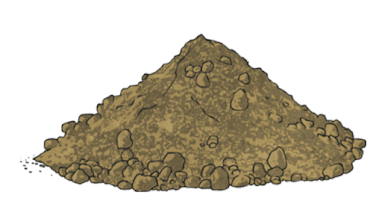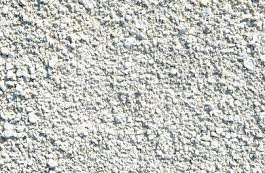What is Soil? Major Types of Soil
What is Soil?
Soil is
natural source that serves as a medium for plant growth. Without soil, probably
plants would not have even existed and hence the very existence of life of all
forms would have been challenged and perished.
Soil can be
defined as, ‘The non-consolidated upper part of earth crust that serves as a
natural medium for the growth of land plants is called soil.’ (Soil Science
Society of America 1987).
The
identification of soil types is highly important before a specific plant is
grown. Because some plants require one type of soil while others require other
type. The soil types include Sandy, Clay, Silty, Loam, Peat, and Chalk. The
soil type depends on the proportion of size of particles within a soil.
Major Types of Soil
Sandy soil
·
Sandy Soil is light due to high
proportion of sand and low amount of clay.
·
It warms up quickly in spring.
·
Mostly remains dry in summer.
·
It often tends to be acidic.
·
Sandy soil has a quick water
drainage.
Particle Size of Sand: 0.05-2.0
mm
Disadvantages:
Due to low withholding capacity, sandy soils
are low in nutrients because water wash them away easily especially rainfall.
 |
| Sandy Soil |
Management of Sandy Soil:
To enhance the hold of sandy soil onto the
nutrients and water, organic matter should be added. Also, it will help in
boosting the nutrients essential for plant growth. Furthermore, apply less
water and fertilizers in order to lessen the losses.
Clayey Soil
·
Clay soil is a heavy soil type.
·
It has excellent water holding
capacity due to which it is high in nutrients.
·
Clay soil is made of over 25%
clay.
·
Due to the presence of pores in
clay particles, a considerable amount of water is present.
·
It remains cool for long time
even in summer and drainage is quite slow.
Particle Size of Clay:
<0.002 mm
Disadvantages:
·
Clay soil compacts rather easily
and swiftly. As a result, roots can’t make their way in those hard pans of
clay.
·
Drainage is too slow that results
in wet and soft condition.
· It often tends to be Alkaline.
 |
| Clay Soil |
Management
of Clayey Soil
·
Avoid working on clay soil when it is wet. It
will avert compaction.
·
Use a cover crop during cool season.
·
Add amendments like compost to improve
organic matter.
Silty Soil
1.
Silt Soil is composed of medium
sized particles and can retain moisture for long time.
2.
It is well drained and high in
fertility.
Particle Size of Silt:
0.002- 0.05 mm
Disadvantages:
1.
It can easily be compacted.
2.
It is prone to be eroded with
rain.
3.
Water filtration is relatively
poor.
4.
It tends to form crust.
 |
| Silt |
Management of Silty Soil:
1.
Addition of organic matter can
help in forming stable clumps.
2.
Also products like compost can
help in improving its structure.
3.
Avoid work on silty soil when
wet.
Loam Soil
·
Loam soil is the most fertile
soil type.
·
Loam is mixture of sand, silt and
clay
·
Silt and clay enhances the
water-holding capacity while sand contributes in reducing the compaction and
better drainage.
·
Since loam has a good
water-holding capacity, it is resistant to drought.
·
It can hold nutrients making it
fertile.
·
Excellent infiltration of air and
water.
·
Depending on the proportion of
sand and clay, it can be sandy loam or clay loam.
 |
| Loam |
Management of Loamy Soil:
Though loamy soil is considered ideal and
favorable for farming or gardening, still it requires management to keep it
healthy for long time. In this regard products that are rich in microbes are
highly helpful in promoting a healthy soil ecosystem.
Other Types of Soil:
Peat Soil
Peat has a considerable amount of Organic
matter.
It has retain moisture in a large amount.
It is rare therefore if needed it is imported
into gardens to ensure optimum growth of plants.
 |
| Peat |
Chalk Soil
Chalk soil is highly alkaline due to the
presence of CaCO3 in its structure.
Due to alkaline nature, Chalk soil does not
support ericaceous plants (plants that require acidic to neutral soils-Ph<
or =7).
 |
| Chalk Soil |
Conclusion:
To conclude major types of soil are Sandy, Clayey, Loamy and Silty. Other types include Peat and Chalk. Among them the most ideal and favorable is Loam. All types of soil have their advantages and disadvantages. However, proper management can make their production quite efficient.
Comments
Post a Comment